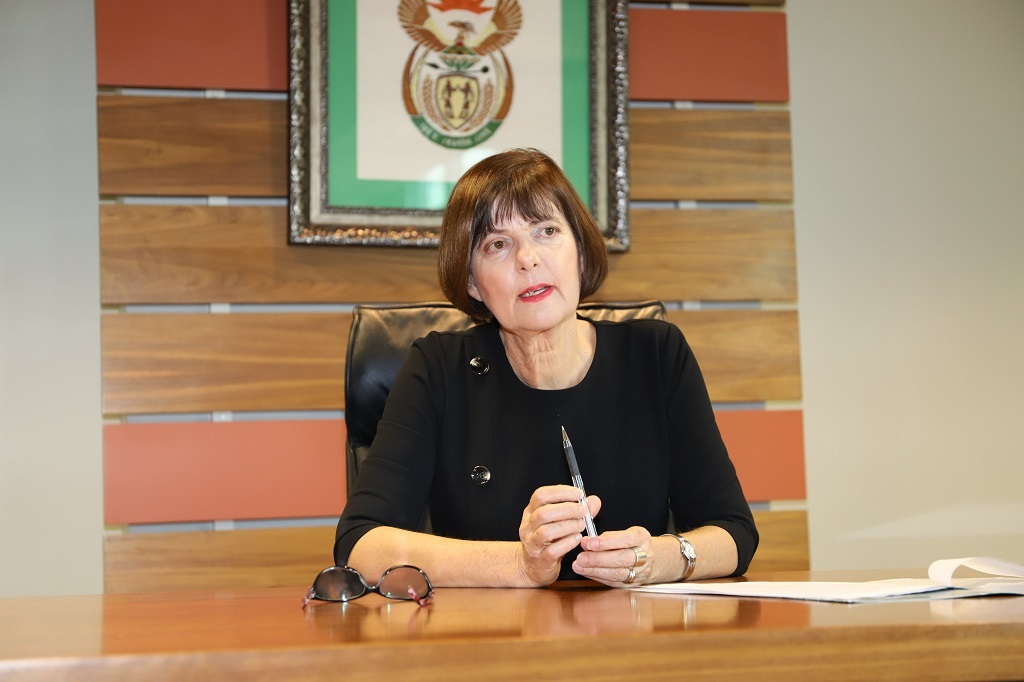
Government wants to shorten the timeframes for solar PV projects to get off the ground with changes targeted at the environmental assessment process.
During a stakeholder briefing on Thursday, Minister of Environment, Forestry and Fisheries Barbara Creecy announced intentions to gazette two documents for public comment in August to simplify the rollout of solar PV projects.
Creecy explained that her department noted the lengthy Environmental Impact Assessment (EIAs) process required for projects. A number of steps have been taken to reduce this process.
For one, the Department of Forestry, Fisheries and Environment (DFFE) has identified Renewable Energy Development Zones (REDZ). Renewable projects located in these zones would have their EIAs reduced from 300 days to approximately 176 days. But this is still lengthy, and the department has been working to decrease the timeframes further, Creecy said.
Other measures introduced by the department are to EIA decisions for Strategic Infrastructure Projects shortened from 107 days to 57 days.
Over and above these measures, the DFFE has developed a screening tool – a web-based application – which includes environmental information of different sites nationally. The tool can identify areas of low, medium and high environmental sensitivity.
Dr Dee Fischer, the department's chief director of integrated environmental management support, explained the tool has environmental information from different sources, such as the South African National Biodiversity Institute. It rates different areas based on their environmental sensitivity. For example, it would show if a site has high biodiversity or high potential for agricultural land and can also show restrictions by identifying protected areas.
Using the screening tool in the first step of the EIA process gives developers a "fair idea" of the environmental sensitivity of a site. The tool automatically generates a report for developers indicating the level of sensitivity on a particular site. This report can be submitted as part of the EIA application process. An environmental practitioner will then use the report to motivate which assessments are required based on the sensitivity of the area.
Creecy intends to gazette a proposal for the screening tool to be adopted as an environmental management instrument. If a solar PV project and its related infrastructure comply with this environmental management instrument – they can be excluded from requiring environmental authorisation.
This is subject to certain requirements:
- The appointment of an independent environmental assessment practitioner and specialists in agriculture, terrestrial and aquatic biodiversity, cultural heritage and palaeontology.
- Confirm the environmental sensitivity rating through inspection by specialists.
- The environmental assessment practitioner prepares a site sensitivity report to confirm the sensitivity rating. The project should also comply with allowable development limits – for example, if the project is located in an agricultural area, it should not compromise food security.
- The preparation of an environmental management programme by specialists and the environmental assessment practitioner.
- There should also be a signed declaration indicating the site sensitivity verification report is a true representation of findings, that there is an environmental management programme, and that the developer will implement mitigation measures of the environmental management programme.
- There should be a declaration that the specialists and environmental practitioners are independent.
Fischer emphasised that this proposal would "simplify" the deployment of solar PV facilities. The authorisation process would be changed to a registration process. The time frames for projects that are not located in REDZ would reduce from 300 days to 60 days, and for those located in REDZ, the time frame shortens from 147 days to 60 days.
There are plans to use the same tool for the expansion of transmission infrastructure. The department has also started work on a generic environmental management programme for solar PV projects in areas identified as having medium and low sensitivity.
Work is also underway to simplify the process for wind projects. The impact on birds and bats is particularly an important consideration when it comes to wind energy. Fischer shared that a 12-month study is required to determine these impacts.
Earlier this year, the minister also gazetted for public comment a new standard for the development of power lines and substations within identified geographical areas. This standard similarly excludes the need for environmental authorisation for grid capacity – in areas identified as having low and medium environmental sensitivity and that fall within strategic transmission corridors, Fin24 previously reported.
This standard will be gazetted for implementation by the end of July 2022, the department said in a separate statement.
Creecy said that since the beginning of President Cyril Ramaphosa's term, departments had been tasked with dealing with red tape that constrains work that needs to be achieved.

